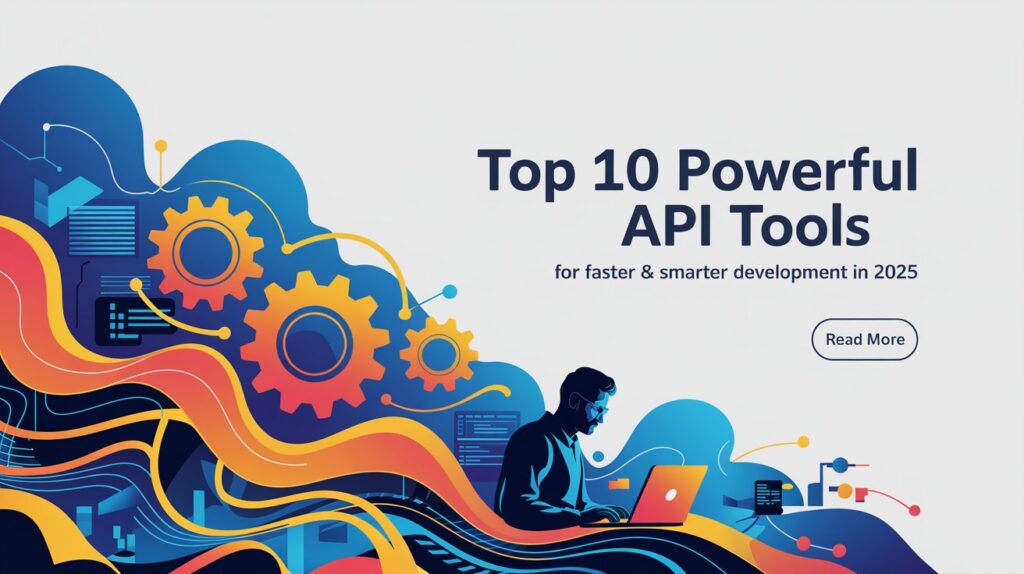Table of Contents
Meta Description: Explore the top 10 API integration tools for developers in 2025. Discover the best platforms to streamline your development process, connect services, and boost productivity.
In the modern age of digital innovation, API integration tools are the unsung heroes behind every great application. From connecting payment gateways and cloud services to automating workflows between software platforms, APIs help systems “talk” to each other. But as your tech stack becomes more complex, manually integrating APIs can be time-consuming and error-prone.
That’s where API integration tools come into play.
In this blog, we’ll explore the top 10 API integration tools for 2025, helping developers and teams create powerful, seamless, and efficient connections between platforms.
What Are API Integration Tools?
API integration tools are platforms or software that allow developers and non-developers to connect applications, services, or data systems using application programming interfaces (APIs).
Rather than writing thousands of lines of backend code, these tools offer simplified interfaces, automation workflows, and debugging capabilities to connect one app or service to another.
Why Are API Integration Tools Important in 2025?
In 2025, businesses are demanding faster digital transformation, automation, and integration between their tools. Manually handling API integrations wastes time and increases technical debt.
Here’s why API integration tools matter now more than ever:
- Speed up development cycles
- Ensure secure, scalable integrations
- Reduce human error
- Enable low-code or no-code automation
- Improve team collaboration
Top 10 API Integration Tools Developers Should Know in 2025
Let’s break down the best API integration tools that are helping developers build faster and smarter.
1. Postman – Best for API Testing & Collaboration
Postman is a developer’s best friend for testing and documenting APIs. With over 25 million users globally, it has evolved into a powerful API integration tool for testing, mock servers, and collaboration.
Key Features:
- Create and test REST, SOAP, and GraphQL APIs
- Monitor endpoints in real-time
- Automate test cases
- Generate sharable API documentation
🎥 Watch this beginner-friendly video:
2. Zapier – Best No-Code API Integration Tool
Zapier connects your favorite apps like Slack, Gmail, Trello, and Google Sheets without writing a single line of code.
Key Features:
- Supports 6,000+ apps
- Create custom workflows (Zaps)
- Add filters, delays, and paths
- Built-in error handling
3. Make (Integromat) – Best for Visual Automation
Make, formerly known as Integromat, is a powerful visual workflow builder that allows users to create complex, logic-based API integrations.
Features:
- Real-time automation builder
- API modules with HTTP/JSON support
- Built-in router and iterator logic
- Advanced scheduling and debugging
4. RapidAPI – Best API Marketplace & Management Platform
RapidAPI is a massive hub where developers can find, connect to, and manage thousands of APIs.
Why Developers Love It:
- Access 40,000+ APIs in one dashboard
- Built-in code snippets in multiple languages
- Track usage, billing, and analytics
- Publish your own API for monetization
5. Apigee – Best Enterprise-Level API Management
Owned by Google Cloud, Apigee offers robust enterprise-level API management with advanced traffic control, security, and analytics.
Top Features:
- OAuth2.0, API tokens, and rate limiting
- Real-time monitoring and logs
- Developer portal creation
- Gateway architecture for scalability
6. MuleSoft Anypoint Platform – Full Integration Lifecycle
MuleSoft helps companies build application networks with APIs, integrations, and connectors.
Best Features:
- API gateway + lifecycle management
- Data transformation using DataWeave
- Connect legacy systems and cloud platforms
- Comprehensive analytics dashboards
7. Tyk – Best Open-Source API Gateway
If you’re into self-hosting, Tyk is an excellent lightweight API gateway solution that supports open-source architecture.
Key Features:
- Real-time analytics
- Self-hosted, hybrid, or SaaS options
- Built-in developer portal
- Plugin support (Go, JS, Python)
📎 Try Tyk
8. Tray.io – Best for SaaS API Integrations
Tray.io empowers businesses with scalable, low-code automation.
Standout Capabilities:
- Workflow orchestration
- Smart branching logic
- Robust third-party connectors
- API health checks
9. Workato – Best for Business Automation
Workato blends powerful automation and enterprise-grade API integrations in one platform.
Use Cases:
- CRM and ERP integrations
- Slack bot workflows
- Real-time data sync with SQL/NoSQL
10. Boomi – Integration Platform as a Service (iPaaS)
Boomi, a Dell Technologies company, provides cloud-native integration for faster digital transformation.
Key Features:
- Low-code drag-and-drop tools
- Real-time integrations
- Supports IoT, B2B, and EDI systems
How to Choose the Right API Integration Tool
Choosing the best API integration tool depends on your specific project needs. Here are some quick tips:
| Feature | Why It Matters |
|---|---|
| Usability | No-code vs low-code vs dev-friendly |
| Supported Integrations | Number of apps/APIs supported |
| Real-Time Data Handling | Instant updates and sync |
| Security | OAuth2, JWT, rate-limiting, access control |
| Analytics | Monitoring, logs, and performance metrics |
| Collaboration Features | Team-friendly UI, version control |
| Cost | Free tier availability and scalability |
API Integration Tools for Laravel & PHP Developers
As a Laravel developer, you’re likely using APIs for payment processing, shipping, SMS, and more.
Helpful Laravel Packages:
- GuzzleHTTP – HTTP client for API requests
- Laravel Passport – OAuth2 for API authentication
- Laravel Sanctum – Lightweight authentication
- Spatie Webhook Client – For handling webhooks
Final Thoughts: Why You Need API Integration Tools
If you’re still manually writing code to connect apps and services in 2025, you’re wasting time. API integration tools are essential for improving productivity, reducing errors, and building scalable systems.
Whether you’re a solo developer, SaaS founder, or enterprise architect—there’s a tool here for you.

